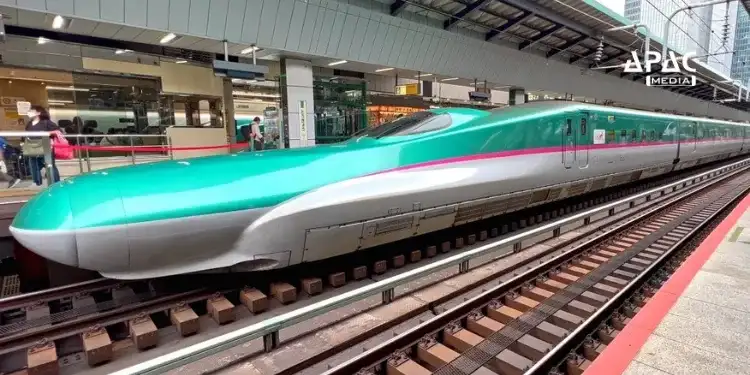From Tokyo to Mumbai: Can Japan’s Bullet Train Technology Transform Indian Railways?
India is gearing up for a major leap in transportation with the launch of its first India bullet train, connecting Mumbai and Ahmedabad. With support from Japan, which is gifting two Shinkansen trains for testing, the project marks the beginning of a new era in high-speed rail travel for the country.

This generous gesture highlights the deepening ties between the two countries and offers a much-needed boost to India’s ambitious plan for high-speed rail.
Japan Gifts Two Shinkansen Trains to India
Japan has decided to gift two of its advanced Shinkansen trains—one E5 series and one E3 series—to India. These trains will arrive by early 2026, fully equipped with testing and inspection tools. Engineers will use them to conduct trials on the upcoming Mumbai-Ahmedabad high-speed rail line.
Rather than carrying passengers, these trains will collect essential data to help assess how the system performs in India’s challenging weather. Hot summers and dusty conditions require careful evaluation to ensure safety and efficiency.
India Bullet Train Project Picks Up Speed
The Mumbai-Ahmedabad High-Speed Rail (MAHSR) project is India’s first dedicated bullet train line. This corridor will stretch around 500 kilometers and allow trains to operate at speeds of up to 320 km/h. The National High-Speed Rail Corporation Limited (NHSRCL) is overseeing the project with strong support from Japanese partners.
Once completed, this bullet train will cut the travel time between Mumbai and Ahmedabad to just under three hours—more than halving the current journey. Construction teams are already laying tracks and building key structures, and India is making steady progress toward launching the country’s first true high-speed railway.
E5 for Testing, E10 for the Future
Initially, India had plans to use the E5 series Shinkansen trains for passenger service. But with rising costs and shifting needs, India now plans to introduce the newer E10 series in the 2030s. These next-gen trains promise better energy efficiency, advanced safety systems, and greater passenger comfort.
For now, the E5 and E3 units from Japan will help Indian engineers gain real-world experience. They will test various systems, check track alignment, and ensure that all safety protocols work under Indian conditions.
A Stronger India–Japan Rail Partnership
India’s bullet train vision became a reality in 2016, when Prime Minister Narendra Modi and Japan’s then-Prime Minister Shinzo Abe signed a landmark agreement. This partnership brought Shinkansen technology to India and supported the country’s “Make in India” campaign.
To fund the project, Japan offered low-interest yen loans that cover about 80% of the cost, initially estimated at ₹1.8 trillion. As expenses rise, both countries are working on a new loan agreement to manage additional funding. Reports suggest that leaders may finalize the revised deal during Prime Minister Modi’s next visit to Japan.
India’s Semi-High-Speed Progress So Far
India has already taken steps toward faster trains with the Vande Bharat Express and the Regional Rapid Transit System (RRTS). These semi-high-speed trains reach up to 180 km/h. However, they still run on older tracks, which limits their speed and efficiency.
The Mumbai-Ahmedabad bullet train will mark a complete shift by running on a new, dedicated high-speed corridor. This setup allows consistent speeds of over 300 km/h and introduces India to international-level rail standards.
Phased Launch Planned for Smooth Operation
Instead of launching the entire route at once, the Indian government will roll out the bullet train project in phases. This gradual approach allows engineers and operators to address challenges early and make adjustments before full-scale operations begin.
Indian railway staff are also training in Japan, learning to manage and maintain the Shinkansen system. This knowledge transfer ensures long-term sustainability and prepares India to eventually produce its own high-speed rail components.
Looking Ahead: A New Era for India’s Railways
India’s bullet train journey is about more than just faster travel—it represents innovation, international collaboration, and a commitment to modern infrastructure. Japan’s contribution through Shinkansen technology and financing has played a key role in driving this transformation forward.
As the project progresses and trials begin, India is laying the foundation for a future where high-speed rail travel becomes the norm. With every kilometer of track built and every successful trial completed, the dream of a modern railway network inches closer to reality.






